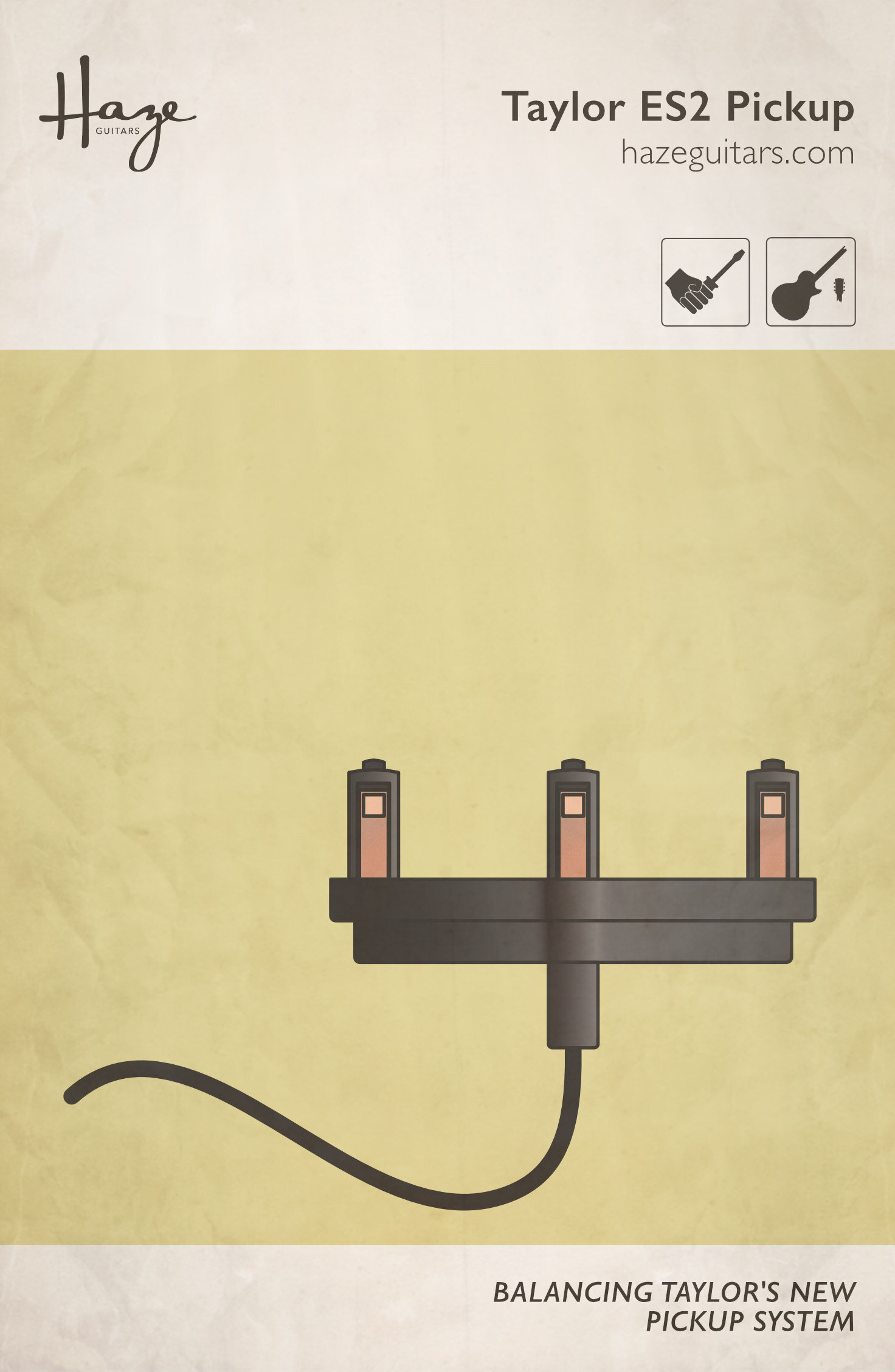Taylor ES2 Pickup Balancing
In the Acoustic Guitar setup guide in my Sketchy Setups series, I touched on Taylor Guitar’s ES2 pickup system. I explained how to balance it and mentioned a safety tip that’s important to anyone setting up one of these guitars. I figured that would be useful to a wider audience.
The Taylor ES2 is an interesting beast. It’s a piezo-driven system. Typically, when we hear piezo pickup, we default to thinking about an under-saddle transducer (UST). That’s a strip of piezo material sandwiched between the saddle and the bridge of an acoustic guitar. USTs are more or less the default acoustic guitar pickup. They’re not without their problems though. Anybody that’s ever struggled to balance a string that’s too quiet or too hot on their amplified acoustic will sympathise. Good setup of an under-saddle pickup can be a time-consuming affair.
So Taylor went and designed a piezo pickup that sits behind the saddle instead of under it.
Taylor’s ES2 pickup is one of those ideas that's simultaneously very clever and also simple enough to file under why-didn’t-anybody-think-of-that-before? That said, I'm reliably informed that there was some serious boffin-brained work—and some expensive equipment—employed to analyse exactly how the saddle and top moved when played.
There are three small pickup elements. Each sits on the end of, what I’m just going to call a ‘prong’ and the three prongs mount on a bar. Prongs and bar are really just a housing. The prongs poke through corresponding holes in the guitar top and bridge, positioning the business-end right behind the saddle. The pickups contact the back of the saddle and sense the vibrations from there.
Each pickup element is mounted in a housing with a hex-head screw that can move the pickup backward and forward slightly. This allows the pressure each applies to the saddle to be adjusted.
So, instead of fighting with UST saddle fit, pickup balance can be achieved by tiny turns of three small Allen screws.
Balancing an ES2 pickup is a matter of using a .050” hex wrench to make very small adjustments so each string pair (E/A, D/G, B/e) has a consistent output. Easy-peasy.
Taylor makes the usual saddle-fit recommendations for good balance (not too tight, not too loose, not leaning, flat saddle, flat slot, etc.) but the ES2 is actually pretty forgiving of all of this stuff. You want all of this right anyway for a good acoustic sound and problem-free operation but the ES2 will tolerate a less-than-perfect fit much better than a UST.
Taylor ES2 Warning
Ah, yes. A necessary warning.
Because the pickup elements press against the back of the saddle, it is strongly recommended you loosen all three before removing the saddle. Failing to do so could, potentially, damage the pickup.
Taylor recommends loosening each pickup hex-screw by 1 to 1.5 turns if you need to remove a saddle (in practice, one turn seems to be plenty). After replacing the saddle, snug each pickup back up by the same amount. After restringing you can double-check balance and adjust accordingly.
The pickups should sit roughly flush with the top surface of the bridge (those in the image above are a little low). The pickup unit (bar and prongs) can move up and down relatively freely so re-check height after you’ve messed about with the saddle. If the unit comes free from the guitar top, it’s easy to reinsert (make sure the pickups face towards the saddle of course).
I don’t want to come across as a Taylor fan boy but, damn, they do keep inventing better mousetraps.
If I can toot my own horn here, I mentioned that this stuff was covered briefly in Sketchy Setups #7 Acoustic Guitars. I’d be remiss if I didn't also mention that there are six other setup guides in the series. These are a really great way into guitar setup. If you’re not sure where to start, start here. Check ‘em out.
- /#1 Stratocaster
- /#2 Telecaster
- /#3 Gibson Les Paul, SG, ES335, etc.
- /#4 Precision and Jazz Bass
- /#5 Fender Offsets — Jazzmaster, Jaguar, Mustang, Jag-Stang
- /#6 Locking Tremolo-equipped Guitars (Floyd Rose, Ibanez Edge, etc.)
- /#7 Acoustic Guitars
This article written by Gerry Hayes and first published at hazeguitars.com













